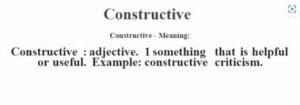Constructive Dismissal Affect Employee Retention Strategies
When companies need to lay off staff, it’s often necessary to keep their operations running smoothly and efficiently. This is particularly common during tough economic conditions, and it can also be a necessity in the event of a disaster (like the coronavirus pandemic) that impacts supply chains or seasonal projects. But even in cases where it is genuinely necessary to dismiss an employee, the process should follow employment law strictly. If not, then an employee may be able to claim wrongful termination or constructive dismissal. This can have long-term consequences for a company, including lawsuits and damage to reputation.
It is important for employers to understand the basics of constructive dismissal in order to reduce the risk of this happening to their employees. This includes recognizing that certain changes in workplace conditions can trigger a constructive dismissal claim, and planning accordingly.
In a basic sense, constructive dismissal is when an employer creates intolerable working conditions that force an employee to resign from their job. This can be in the form of an explicit breach of contract, or a more subtle breach of implied terms of trust and confidence. The latter can be more difficult to prove, but in general any conduct that destroys an employer-employee relationship of trust and confidence without a legitimate reason could qualify.

How Does Constructive Dismissal Affect Employee Retention Strategies?
The most straightforward example of a constructive dismissal would be if an employer tells an employee they will either resign or be fired. This is an immediate and clear repudiation of one of the fundamental terms of employment. However, there are many other examples that can qualify as constructive dismissal lawyer if the circumstances are severe enough. For instance, a significant change in an employee’s compensation, role or duties, work location, reporting functions within the organisation hierarchy, or other working conditions is usually sufficient to justify a resignation.
If an employee believes they have been subjected to constructive dismissal, they should first attempt to resolve the situation with their manager. This can prevent the need for legal action and can make it clear to the employer that they are taking their concerns seriously.
If an employee successfully demonstrates that their employer has committed constructive dismissal, they will be entitled to compensation from the company for loss of income and inconvenience. This compensation can include notice pay or severance payment, depending on the specific circumstances of the case. A lawyer can assist with negotiating this compensation, and ensure that the employee receives what they are owed.
In some cases, this compensation can even be paid retroactively from the date of termination, in addition to any damages awarded for emotional distress. This is especially important for employees who are unsure about their financial stability after being laid off or dismissed, or who may need to cover childcare or other household expenses after leaving their job. This extra support can help them get back on their feet financially, and can alleviate some of the stress that can be associated with being unemployed.




